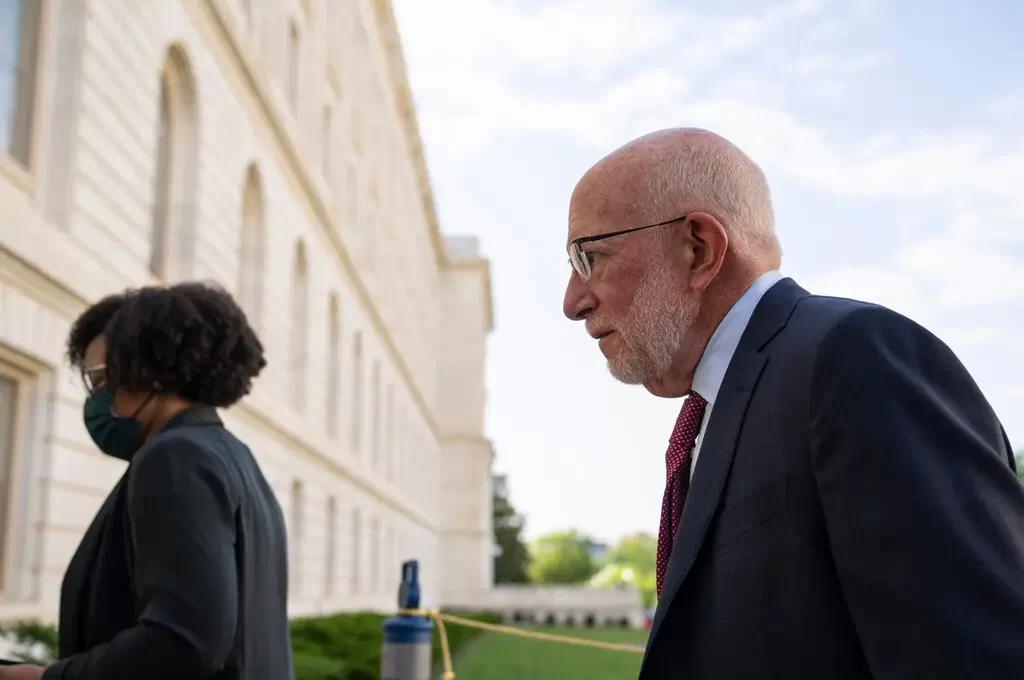
“It won’t just be Republicans in 2024. Plenty of Democrats will get hysterical over the idea of a Trump victory, and some are prepared to engage in violence. On the GOP side, we’ve already seen they are capable of reacting violently,” Mr. Ginsberg said. “I think we are going to have serious bloodshed in 2024.”
President Biden has been attributing the surging political violence in the U.S. to former President Donald Trump and his supporters, yet analysts observe that the increase in threats and attacks is a bipartisan phenomenon.
Throughout a series of campaign-opening speeches, Mr. Biden pointedly accused Mr. Trump and his backers saying they “embrace political violence and laugh about it.”
Analysts studying the issue, however, assert that both ends of America’s increasingly contentious political spectrum share responsibility.
“It’s not all about Trump. There are forces on the left that are just as intemperate as Trump,” highlighted Benjamin Ginsberg, a Johns Hopkins University researcher on political violence. “Trump bears some of the blame, but there are plenty of Democratic politicians and operatives who are intemperate and prone to violence.”
Ginsberg referenced Rep. Maxine Waters, a California Democrat, citing her inflammatory rhetoric as an example.
“Maxine Waters told Democrats to ‘get in the face’ of Republicans. It is a prelude to shooting at them,” he said.
As 2023 drew to a close, at least three Republican Congress members claimed to have been victims of “swatting,” a menacing prank involving false shooting reports that triggered armed police SWAT team responses at their residences. Rep. Marjorie Taylor Greene, a Georgia Republican, disclosed that her home and her daughters’ residences were targets of such incidents.
In late 2023, a New Hampshire man faced charges for threatening the lives of Republican presidential candidates Vivek Ramaswamy and Chris Christie, asserting intentions to carry out a “mass shooting” at a campaign event and sending threatening messages.
Recent events have underscored that individuals across the political spectrum exhibit dangerous tendencies. Threats have targeted public officials in Maine and Colorado after barring Mr. Trump from their states’ primary ballots.
Disturbingly, an Arizona man threatened to “wanted to execute every single FBI agent and employee, including the maintenance staff,” on a pro-Trump message board. Similarly, a Florida man allegedly left voicemails threatening to kill Rep. Eric Swalwell, a California Democrat, and a Montana man admitted to threatening to “personally kill Joe Biden.”
Kathleen Keneally, head of threat analysis and prevention at the Institute for Strategic Dialogue, highlighted the increasingly nonpartisan nature of these threats, stating,
“The threats are being directed at both parties. This is truly becoming a nonpartisan issue regardless of where you sit on the political aisle. If you are a public official, you are going to be a target.”
However, researcher Sheehan Kane from the University of Maryland disputes the idea that violence is bipartisan. Kane’s research linked 125 extremists in the database at Maryland’s Study of Terrorism and Responses to Terrorism program to QAnon conspiracy theories.
“From 2019-2021, extremists who committed ideologically motivated crimes in the United States were linked to the QAnon conspiracy theory more than any other extremist group or movement,” she said.
An alarming survey from October revealed that 1 in 4 Americans believe political violence could be justified to “save” the country. Notably, the poll by the Public Religion Research Institute indicated that a significant portion across party lines—33% of Republicans, 22% of independents, and 13% of Democrats—contemplated violence as a potential recourse.
Although political violence has escalated, a comprehensive solution remains elusive. The approaching presidential election, coupled with heightened tensions fueled by accusations between Mr. Biden and Mr. Trump, has turned America into a political powder keg.
Ms. Keneally emphasized the divisive rhetoric trickling down from political campaigns as a significant contributing factor to this escalating discord.
“There is a combination of factors influencing this threat environment. Law enforcement and the Justice Department don’t have enough resources, and there are so many threats to public officials and election workers that it requires a lot of resources in manpower. The current trajectory is that the volatile threat environment is going to continue.”
“We are witnessing a deepening divide, and this rhetoric is filtering down from their campaigns,” she observed.









